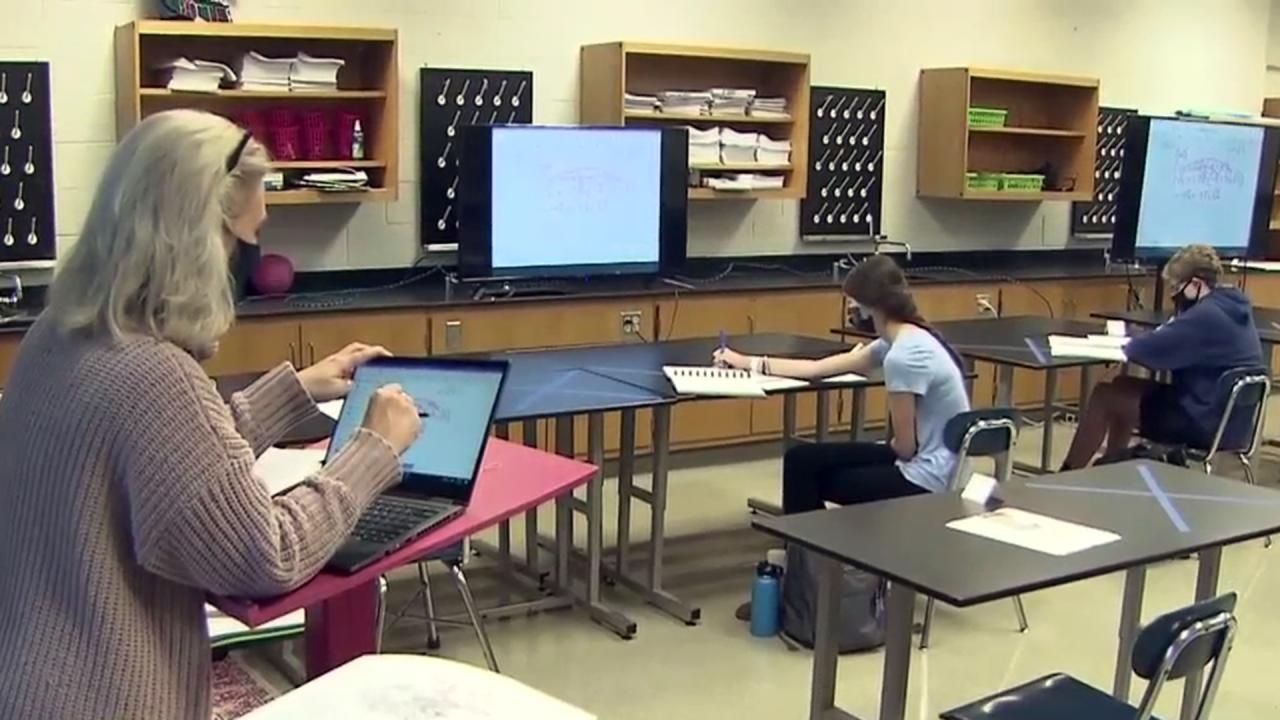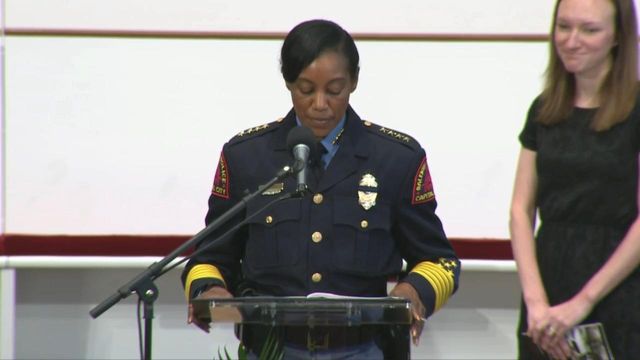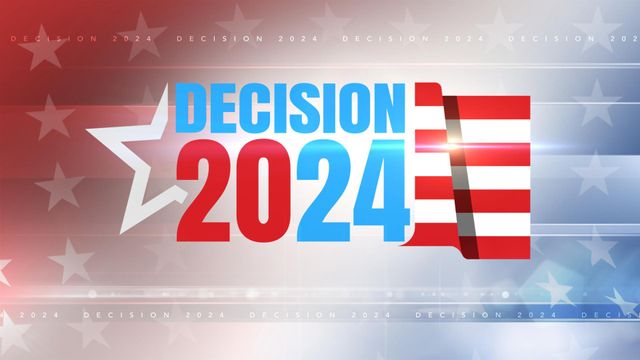NC education leaders float new path to become a teacher, higher pay

North Carolina education leaders are mulling changes to the state’s teacher licensure program that would boost starting teacher pay and attempt to weed out early-career teachers who haven’t shown they are effective teachers.
The state Department of Public Instruction has a rough draft model under review now. Any changes to the licensure model are a long way off.
State officials continue to gather feedback and seek support from members of the Professional Educator and Preparation Standards Commission and the State Board of Education. After that, the changes would need General Assembly approval.
The State Board of Education will hear a presentation on the draft model at its monthly meeting this week. A final proposal for the board to approve won’t come for months.
The draft is based on recommendations from four subcommittees of the North Carolina Professional Educator Preparation and Standards Commission. Lawmakers created the commission in 2017 to, establish “high standards for North Carolina educators” and report to the State Board of Education.
Members of those subcommittees have suggested gathering more feedback, including by conducting a listening tour of educators across the state.
As a significant overhaul to the rules surrounding state’s struggling teacher workforce, the draft has received considerable praise and trepidation from subcommittee members.
“This could be a huge shift in education, but it’s also scary because it’s a paradigm shift,” said Maureen Stover, a recent North Carolina Teacher of the Year and National Teacher of the Finalist. Stover spoke as a member of the licensure subcommittee last week reviewing the draft.
Praise has come from those who have wanted to see teachers rewarded financially for the additional responsibilities they’ve taken on and from those who have wanted to see a boost in starting pay.
Criticism has come from those questioning the state’s emphasis on student test results, when teachers will find the time to take on additional responsibilities, what kind of pay raises would be available in between license renewals and whether the new model will lead to less prepared educators in classrooms. Many have questioned whether an emphasis on improving test results will lead to teachers "teaching to the test."
“My big takeaway on this plan and my biggest concern is that it institutionalizes the current triage model that’s burning folks out and contributing to our pipeline issues,” said Kim Mackey, a social studies teacher in Wake County who runs a blog called educatEDpolicy.
Growing class sizes have already stressed out many teachers, Mackey said, and adding responsibilities means teachers have less time to focus on those responsibilities. That can make some teachers feel like they’re in “survival mode,” she said.
Emphasis on skills
The draft model seeks to change the current licensure system from one based on subject matter licensure to one that rewards teachers for both the outcomes of students in the teachers’ classrooms and taking on additional school leadership roles.
The emphasis on having skilled teachers who demonstrate “effectiveness” is woven throughout the draft.
At the same time, that the draft model would have a positive impact on students is only an assumption.
“To my knowledge there is no research that indicates improved outcomes or better teacher recruitment and retention because such a paradigm shift in licensure and compensation has never been undertaken at the state level,” Tom Tomberlin, director of educator recruitment and support for DPI, told WRAL News in an email.
The draft model relies heavily on the state’s system of evaluating teacher effectiveness.
The state uses an algorithm (known as EVAAS) created by Cary-based SAS Institute that estimates a teacher’s impact on their students.
The algorithm predicts how well a student will perform on their next tests. Then, once the students takes those tests, it takes the new test results, compares them to the predicted test scores, and attempts to extrapolate what impact the student’s teacher may have had.
In 2019, the last year for which data ore available, 87.4% of North Carolina’s teacher demonstrated effectiveness.
Teachers who obtain a license before they begin teaching and those who obtain a license after they begin teaching demonstrate similar levels of effectiveness, Tomberlin said.
Part of the goal of the draft licensure model is to emphasize the skills a teacher has versus how a teacher obtained those skills, Tomberlin said.
In meetings, several people who work with colleges expressed concern that the changes are an attempt to decrease emphasis on college teaching programs. Those programs provide extensive education on subjects and the psychology of learning.
Tomberlin called that assumption a “false premise.”
After a brief but heated exchange last week, Tomberlin said he still anticipates most new educators would come from university education programs.
Experts have noted that more and more of the state’s new educators do not have education degrees and do not obtain full educator licenses prior to becoming teachers.
Enrollment in education degree programs has plummeted from more than 18,000 in 2011 to just about 13,000 in 2018, according to data published by the University of North Carolina-Chapel Hill. More recent data shows a slight uptick, but not a return near 2011 levels.
Mackey suspects the lower buying power of teacher starting salaries is a contributor to the decline in interest in the teaching profession. More than that, the state has reduced funding for some of its teacher recruitment efforts, such as NC Teaching Fellows, and no longer rewards master’s degree attainment or longevity with the state.
Mackey said many teachers don’t feel like state leaders are listening to them.
“It’s the folks on the inside and on the ground that we should be listening to,” she said.
Since the start of the COVID-19 pandemic, schools have reported staffing shortages. While most of the vacancy challenges have been with low-paid hourly workers, schools are also reporting not having enough teachers or substitute teachers.
Teachers have said they’re covering for too many classrooms without teachers and are feeling burned out.
Data from spring 2021 don’t show higher than usual turnover, but data from early this fall show higher vacancy rates for teaching positions. That state vacancy data, however, doesn’t include teachers with alternative teaching licenses who may be employed full-time and who are growing in numbers in the state.
Tiered system
The draft licensure model creates seven distinct licenses, all on a tiered system. The first four licenses are beginner licenses lasting no more than three years each and cannot new renewed. Teachers can only have any combination of the beginning licenses for a total of five years. In order, the beginning licenses are:
- Apprentice teacher: Works as a co-teacher earning $30,000
- License I: Must have bachelor’s degree or industry certification or experience. This teacher works under an advanced teacher mentor but is the teacher of record in their classroom. Earns $38,000.
- License II: Must pass certain assessments, obtain certain credentials or complete another to-be-determined process. This teacher works under an advanced teacher mentor but is the teacher of record in their classroom. Earns $40,000.
- License III: Must prove higher mastery of content and pedagogy than a License II teacher. People who complete a formal educator preparation program approved by the state can enter at this level. This teacher works under an advanced teacher mentor but is the teacher of record in their classroom. Earns $45,000.
Current base pay for a starting teacher is $35,460 and is set to rise to $35,920 next fall. That’s toward the bottom nationwide, though the state’s average teacher pay is among the highest in the South.
Beginner teachers who do not qualify for the next license cannot renew their beginner licenses and can work only as teaching assistants while attempting to qualify for the more permanent teaching licenses.
This is meant to be an off-ramp for teachers who don’t demonstrate effectiveness early in their careers.
The final three licenses are professional licenses, who all would earn starting salaries above the maximum base pay for teachers right now — $56,000 starting, compared to $52,680 as the maximum for teachers with 25 or more years of experienced.
The professional licenses are five-year licenses that, once achieved, can be renewed even if the teacher does not re-qualify for the license. However, a teacher who does not re-qualify will not earn the $5,000 raise that comes with successful re-qualification.
No teacher’s pay would decrease.
In order, they are:
- License IV: “Expert teacher.” One of two “effectiveness” measurements must be met. The EVAAS evaluation of the teacher’s students’ test scores must suggest the teacher was effective or achieved growth for three out of five years. Or, principal and teacher observations must grade the teacher as proficient and student surveys must rank their teacher in the top 25% among teachers evaluated. Earns $56,000.
- Advanced Teacher in classroom excellence: Must “exceed expectations” on the EVAAS evaluation for three our of five years or be rated as “accomplished” on skills reviewed by their principal and teachers and rated highly by students. This teacher coaches other teachers and facilitates other efforts to improve instruction. The teacher must be employed as an advanced teacher with an emphasis on classroom excellence; having qualifications to have the license does not mean they would be employed for that role or paid for that role. Earns $61,600.
- Advanced teacher in adult leadership: Must “exceed expectations” on the EVAAS evaluation for three out of five years or be rated as “distinguished” on skills reviewed by their principal and teachers and rated highly by students. Similar to the advanced teacher in classroom excellence, this teacher also leads instructional improvement efforts at their schools and provides coaching for others. Earns $73,000.
Tomberlin said he expects the state will need 20% to 25% of teachers in North Carolina to take on the advanced teacher licenses.
The state already has an “advanced teaching roles” pilot program that provides extra pay for teachers who take on more leadership duties, but it’s not available to all school districts.











